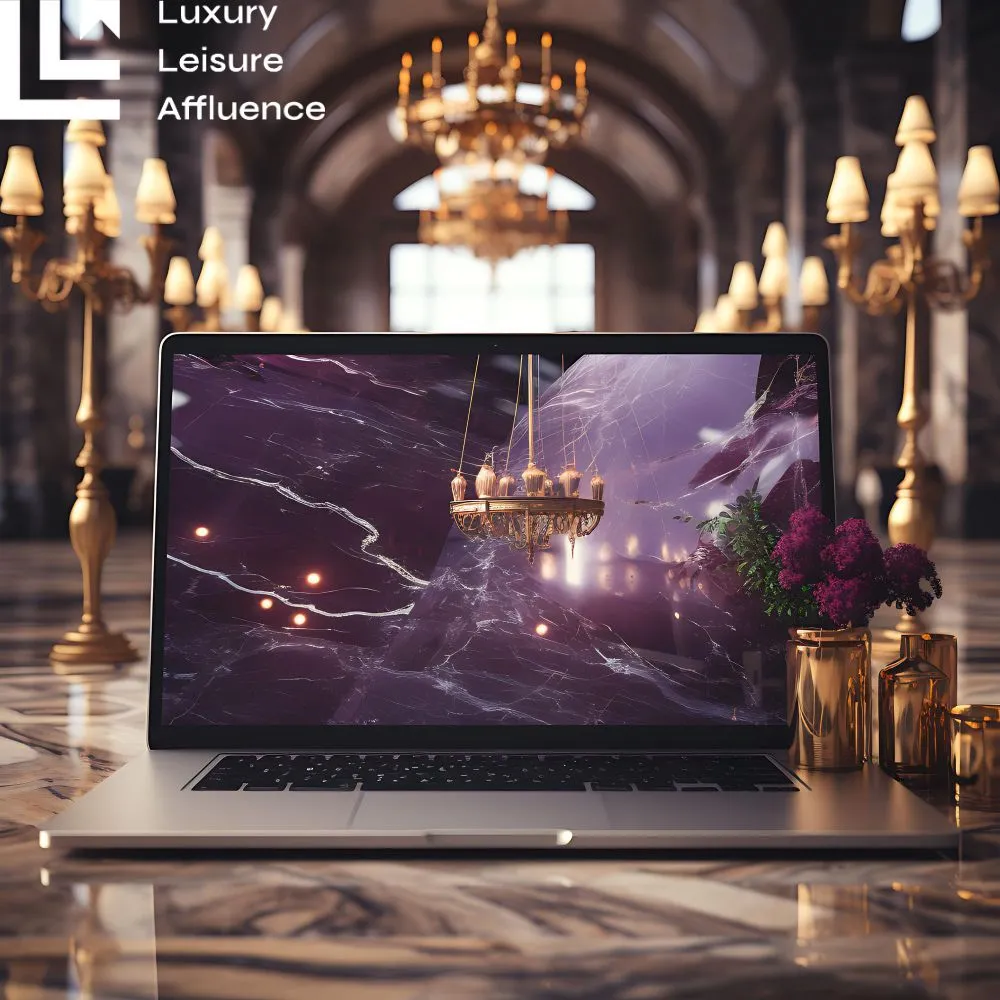Updated On: January 20, 2024 by Yasmin Elwan
The art of developing a successful luxury brand strategy goes beyond creating a product; it involves curating an entire experience. As consumers seek more than just material possessions, luxury brands find themselves navigating a landscape where exclusivity, storytelling, and customer connection play pivotal roles.
In this article, we delve into the intricacies of crafting a strategy that not only encapsulates the essence of luxury but also stands the test of time. Join us as we unravel the steps to define a brand, create a compelling image, and navigate the delicate balance between tradition and innovation.
Developing a Successful Luxury Brand Strategy: Understanding the Market
Luxury brands, synonymous with sophistication and exclusivity, operate within a unique market that demands a nuanced approach. Achieving success in this space requires a profound understanding of the luxury market dynamics. In this section, we dissect the crucial components of market analysis and delve into the ever-changing landscape of market trends and consumer behaviour.
Market Analysis
At the core of every thriving luxury brand is a clear understanding of its target customers. More than just demographic details, this involves delving into the psychographics—unravelling the aspirations, lifestyles, and preferences of the discerning clientele. By creating detailed buyer personas, luxury brands can tailor their products and experiences to resonate deeply with their audience, fostering a sense of exclusivity and connection.
The luxury market is fiercely competitive, and a comprehensive analysis of competitors is imperative. Beyond merely understanding product offerings, this involves dissecting the brand positioning, messaging, and customer engagement strategies of rivals. Uncovering their strengths and weaknesses provides invaluable insights, allowing brands to carve out a distinctive niche and refine their strategies to outshine competitors.
Market Trends and Consumer Behaviour
Luxury, by its nature, is intertwined with evolving tastes and preferences. Staying attuned to shifting consumer desires is crucial for remaining relevant. Brands need to actively monitor and adapt to changes in fashion, lifestyle, and cultural influences.
Whether it’s a shift towards sustainability, a preference for experiential luxury, or changes in aesthetic preferences, anticipating and responding to these shifts ensures that a luxury brand remains in sync with its audience.
The luxury market isn’t confined to established territories; it’s a dynamic landscape that continually expands. Identifying emerging markets and recognising untapped opportunities is key for sustained growth. Whether it involves exploring new geographical regions, targeting emerging consumer segments, or introducing innovative product lines, seizing opportunities in the ever-evolving luxury space is crucial for maintaining a competitive edge.
Defining Brand Identity

The essence of a luxury brand extends beyond its tangible offerings, encompassing a unique blend of values, aesthetics, and storytelling. This section explores the intricacies of defining a brand identity that not only captivates but also becomes synonymous with the epitome of opulence.
Establishing a Unique Value Proposition
At the heart of a luxury brand’s identity lies its value proposition. This isn’t just about the features of a product; it’s about the intangible qualities that set the brand apart, whether it’s an unwavering commitment to unparalleled craftsmanship, a dedication to sustainability, or a promise of exclusivity, a luxury brand’s value proposition shapes its identity and forms the foundation of its connection with consumers.
Creating a Compelling Brand Story
A luxury brand without a compelling narrative is like a masterpiece without a frame—it lacks context and significance. Crafting a brand story involves weaving together elements of heritage, innovation, and aspiration. It goes beyond the origins of the brand to encompass its journey, evolution, and the emotions it seeks to evoke. A well-articulated brand story resonates with consumers on a deeper level, fostering a sense of connection and loyalty.
Heritage and Tradition
Many luxury brands draw strength from their heritage and tradition. Whether it’s a centuries-old craftsmanship technique, a family legacy, or a rich history of patronage, these elements contribute to a brand’s authenticity. Communicating this heritage not only adds layers to the brand’s identity but also establishes a sense of timelessness that is often synonymous with luxury.
Innovation and Modernity
While tradition is vital, a luxury brand must also embrace innovation to stay relevant. The juxtaposition of tradition and modernity creates a dynamic brand identity. Innovative design, cutting-edge technology, and forward-thinking approaches convey a sense of progress and adaptability, ensuring the brand remains a leader rather than a relic.
Building a Consistent Brand Image
A luxury brand’s image is a delicate tapestry woven from various elements, including visual identity, messaging, and customer experience. This section explores the strategies and considerations essential for constructing and preserving a cohesive and enduring brand image.
Visual Identity
The logo is the visual cornerstone of a luxury brand. Its design should encapsulate the essence of the brand, conveying a sense of luxury, exclusivity, and authenticity. A meticulously crafted logo becomes an iconic symbol, instantly recognisable and synonymous with the brand’s values. Consistency in logo usage across various platforms and materials is crucial for reinforcing brand recognition.
In the luxury world, the unboxing experience is often as significant as the product itself. Packaging should not only protect the product but also serve as a tangible extension of the brand’s identity. Consistent use of premium materials, attention to detail, and a refined aesthetic contribute to a seamless brand experience from the moment a customer receives their purchase.
Brand Messaging
The language used by a luxury brand is a reflection of its personality. Establishing a consistent tone of voice across all communication channels, be it in advertising, social media, or customer interactions, is essential. Whether it’s conveying sophistication, exclusivity, or warmth, the tone of voice should align with the brand’s values and resonate with its target audience.
Consistency in messaging extends beyond words to the platforms used for communication. Each channel, whether it’s social media, traditional advertising, or in-store experiences, should convey a unified message. Adapting the message to suit the nuances of each platform while maintaining a cohesive narrative ensures that the brand’s essence remains intact across diverse touchpoints.
Fostering Exclusivity and Rarity
In the world of luxury, exclusivity and rarity are the cornerstones that elevate a brand from the commonplace to the extraordinary. This section explores the art of cultivating an aura of exclusivity, seamlessly intertwining scarcity with desirability to create a brand experience that transcends the ordinary.
Limited Editions and Special Collections
One of the most effective strategies for fostering exclusivity is the introduction of limited editions and special collections. By producing a limited quantity of a particular product or design, a luxury brand not only taps into the innate desire for rarity but also creates a sense of urgency among consumers. This scarcity transforms the product into a coveted masterpiece, encouraging customers to act swiftly to secure a unique piece of craftsmanship.
Strategic collaborations and partnerships with other luxury brands, artists, or designers can be a powerful tool for infusing exclusivity into a brand. By joining forces with entities that share a similar ethos or target audience, a luxury brand can create exclusive, co-branded products or experiences that are not only rare but also hold unique appeal. Collaborations bring a fresh perspective and enhance the perceived value of the brand.
Embracing Digital Marketing
In an era dominated by digital landscapes, the realm of luxury is no exception to the transformative power of online platforms. This section explores the strategies and nuances of leveraging digital marketing to enhance brand visibility, connect with discerning audiences, and elevate the overall luxury brand experience.
Leveraging Social Media for Brand Awareness
Social media platforms provide an unparalleled opportunity for luxury brands to showcase their aesthetics, values, and lifestyle. Crafting visually stunning content that aligns with the brand’s identity is crucial. Platforms like Instagram, Pinterest, and even TikTok can be harnessed to not only exhibit products but also tell compelling brand stories, fostering a digital ambience that resonates with the aspirational desires of the target audience.
Collaborating with influencers and brand ambassadors can amplify a luxury brand’s digital presence. Partnering with individuals whose personal brand aligns with the ethos of the luxury brand adds credibility and expands reach. Influencers can provide authentic testimonials, create engaging content, and connect with audiences in ways that traditional advertising often cannot.
Crafting Engaging Content
Digital marketing allows luxury brands to weave intricate narratives through various multimedia formats. From visually stunning videos that highlight craftsmanship to immersive blog content that delves into the brand’s history, storytelling becomes a powerful tool for creating an emotional connection with the audience. Engaging content enhances the perceived value of the brand and encourages customer loyalty.
In the digital realm, luxury brands can create interactive campaigns and virtual experiences that go beyond the conventional. Virtual product launches, online fashion shows, and immersive brand experiences provide audiences with unique and memorable interactions, establishing a sense of exclusivity and innovation.
Influencer Partnerships and Endorsements
Choosing the right influencers for collaborations is paramount in the luxury sector. Aligning with influencers who share the brand’s values and aesthetics ensures authenticity. Influencers can authentically integrate products into their content, reaching a wider audience while maintaining the exclusivity associated with luxury.
Digital marketing allows for real-time analytics, enabling luxury brands to measure the impact of their campaigns. Monitoring key performance indicators (KPIs) such as engagement, reach, and conversion rates provides valuable insights. Brands can then adapt and refine their strategies based on data, ensuring continuous improvement and relevance in the dynamic digital landscape.
Measuring Success

Success in the luxury industry is measured not only by financial figures but also by the lasting impact of a brand’s identity, the loyalty of its customers, and the sustained elevation of its reputation. This section explores the intricate process of measuring success in luxury branding, including key performance indicators (KPIs) and strategies for continuous refinement.
Key Performance Indicators (KPIs)
Key Performance Indicators (KPIs) play a crucial role in assessing and optimising the success of a luxury brand strategy. In the context of luxury branding, KPIs serve as measurable metrics that provide insights into various facets of a brand’s performance. Here’s a brief explanation of how KPIs work in a luxury brand strategy:
Sales and Revenue Growth
Tracking the financial performance of a luxury brand is fundamental. Analysing sales and revenue growth provides a quantitative measure of success. However, in the luxury sector, maintaining exclusivity often means prioritising profit margins over sheer volume, making revenue per customer an equally critical metric.
Brand Perception and Loyalty
The perception of a luxury brand is intangible but invaluable. Surveys, focus groups, and sentiment analysis can help gauge how the brand is perceived in the eyes of its audience. Customer loyalty programs and repeat purchase rates are also indicative of the brand’s ability to cultivate a dedicated clientele.
Customer Engagement and Interaction
In the digital age, measuring success extends beyond financial metrics to encompass online engagement. Monitoring metrics such as website traffic, social media interactions, and the effectiveness of digital campaigns provides insights into the brand’s reach and resonance. High engagement rates indicate a strong connection with the target audience.
Brand Equity and Recognition
Assessing brand equity involves evaluating the strength of the brand in the market. Metrics such as brand recall, association with luxury values, and prominence in industry rankings contribute to understanding the brand’s overall impact and influence.
Adapting and Refining the Strategy
Adaptability and continuous refinement are the linchpins of a thriving luxury brand strategy. In the ever-evolving landscape of consumer preferences and market dynamics, the ability to adapt is paramount. It involves a nuanced understanding of emerging trends, customer feedback, and shifts in the competitive landscape.
Analysing Customer Feedback
Soliciting and analysing customer feedback is a continuous process that allows luxury brands to understand customer satisfaction, preferences, and areas for improvement. Feedback can be gathered through surveys, reviews, and direct interactions, providing qualitative insights that complement quantitative data.
Monitoring Market Trends
The luxury landscape is dynamic, with trends evolving rapidly. Monitoring market trends ensures that a luxury brand remains relevant and adaptable. Staying attuned to shifts in consumer behaviour, emerging markets, and cultural influences enables brands to adjust strategies proactively.
Competitor Benchmarking
Regularly benchmarking against competitors provides valuable context. Analysing competitors’ strategies, market positioning, and customer perceptions helps identify opportunities for differentiation and improvement.
Iterative Strategy Refinement
Success in luxury branding is an ongoing journey. Analysing KPIs, customer feedback, and market trends should inform a brand’s strategy. The ability to adapt, innovate, and refine the brand’s approach ensures that it remains a dynamic force in the ever-evolving luxury landscape.
As we draw the curtain on our exploration of luxury brand success, it becomes evident that developing a successful luxury brand strategy is a complex and multifaceted process that requires careful consideration of various factors.
From crafting a compelling brand identity to cultivating customer loyalty, luxury brands must continuously refine their approach to stay ahead of the curve. By leveraging key performance indicators (KPIs) and implementing innovative strategies, luxury brands can elevate their status and stand out in a crowded market.











